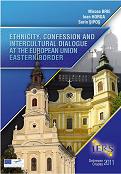Re-interpreting the Civic-Ethnic Divide on the European Identity
Re-interpreting the Civic-Ethnic Divide on the European Identity
Author(s): Dam Srimayee Subject(s): Politics / Political Sciences
Published by: Editura Universitatii din Oradea
Keywords: national identities; civic an d ethnic elements; Europe
Summary/Abstract: Western and Eastern European national identities developed and differed due to the disparate historical contexts (both recent and distant) that they were exposed to. Often, it is seen that Western civic nations are more ethnic than is usually recognized, and Eastern nations are more civic and less ethnic than their Western counterpart. Conceptually, some scholars have even attacked the logic of the civic/ethnic distinction. Most say that states and nations contain both ethnic and civic components in their national history. Smith (1991), for example, writes that “every nation building has civic and ethnic elements in varying degrees and in different forms… Sometimes civic and territorial elements predominate; at other times it is the ethnic and vernacular components that are emphasized. France and Germany, and all of Western and Eastern Europe, have faced the international discourse on nationalism-including both ethnic and civil claims of popular political participation”.
Journal: Eurolimes
- Issue Year: 2011
- Issue No: Suppl01
- Page Range: 329-343
- Page Count: 15
- Language: English
- Content File-PDF

